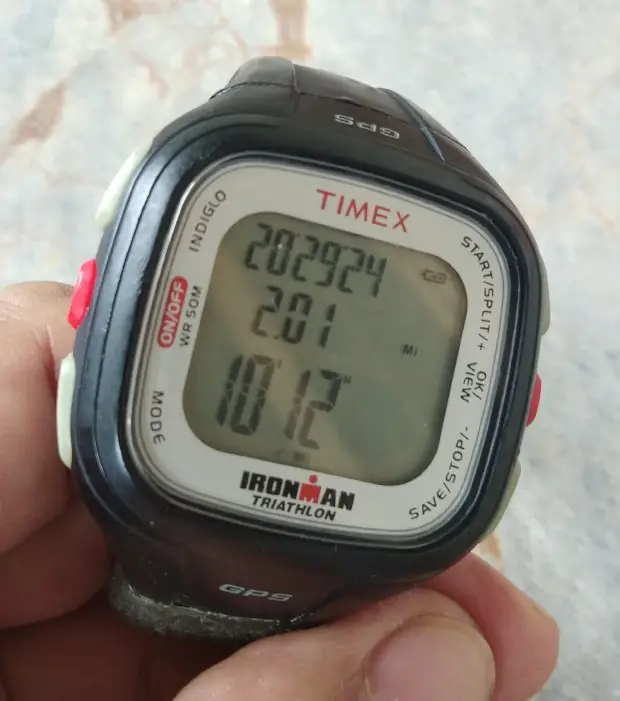How do you get back into running shape during the pandemic? Where do you usually do your running? Here are five reasons why I prefer to run on the rubberized tracks of the sports complex.
One of my concerns during the COVID-19 pandemic is the limitation it imposed on my exercise routine. I usually run eight rounds of the 400-meter track in our city’s sports complex, equivalent to two miles, three to four times a week. It conditions me and keeps me energetic.
Running is a vigorous exercise that makes me huff and puff, forcing oxygen to my oxygen-starved body as most of the time, I sit in front of the computer to do online work and pursue my writing hobby.
I prefer to run on the soft, rubberized track of the sports facility for five reasons.
Reason 1: Joint Issues Due to Poor Running Shoes
The sports complex track is rubberized, giving me a relatively soft ground to cushion my feet every time I land on it with rapid strides. I can avoid foot injury because the tartan track is made up of rubber crumb granules and polyurethane.
In the past, I noticed that every time I ran, my foot ached. I have the stamina, breathing heavily to compensate for my muscles’ increased oxygen demand, but my aching foot joints force me to stop when I could run more.
Running on hard concrete, asphalt, or gravelly road outside of the facility forbodes plantar fasciitis. And once, I went to the doctor to find a remedy. He gave me a steroid ointment (and a rubberized band to stretch my foot regularly), which I used for a while but stopped as I don’t want such chemical intruding into my body.
I decided to weed out the cause, i.e., what causes the painful joints. I thought, it must be my running shoes, as it could not provide enough cushion to protect my joints.
I have tried several pairs of “running” shoes (so they say), but the shoe manufacturers appeared to have skimped on the material to cushion a runner’s foot. I have the impression that they design the shoes for the slim runners, not for the more massive average and mature individuals who anyway wear most of the shoes produced.
I settled on one pair of running shoes that I find comfortable, more expensive than the others, and then added more padding on my foot by wearing two pairs of thick cotton socks and a pair of ProFoot inserts.
I was right. It worked!
I can run more without worrying about hurt joints after exercise. I resumed running without joint pain anymore.
I regularly run two miles without stopping. I can still reach an average of 10 minutes, 12-second mile despite the irregular runs I make in the 50-meter track at home while on quarantine for five months. I’m still in running shape despite the hiatus.
Reason 2: Safety from Speeding Vehicles
The second reason is that running on the tracks in the sports complex removes the possibility of being run over by a speeding vehicle. That is if you used to run miles along the highways. Motorists tend to drive faster on the roads due to less traffic as people tend to stay at home to avoid contracting COVID-19.
My wish is to run in a forest or mountain park with rubberized tracks at different elevations. I will get a lot of oxygen and challenging inclines to tackle.
Is there such a place?
Reason 3: Less People Use the Sports Facility
Before resuming my running activity, I drove around the sports complex to see if there are users of the facility. I counted 14 the first time I decided to go for it, with only three running along the tracks. Three lanes were designated: one for walkers, one for joggers, and the innermost lane, for runners.

As there are only very few runners and joggers, I chose either the jogging or running lane. However, there are instances where walkers go through the jogging or running lane. Or sometimes, an exhausted runner forgets to go to the walking lane when they are walking. So I just ran along the jogger or walker lane, whichever is free. Distancing is key to avoid the possibility of inhaling the exhales of an asymptomatic COVID-19 carrier.
I cover my face with a surgical mask upon approaching some runners or walkers but bring it down my chin whenever I’m far away from them. Somehow, that scheme comforts me. I reduce the possibility of getting infected by COVID-19 while I get better carbon dioxide release as I breathe heavily to convert stored food and liquid to energy.
Reason 4: Help is Available If Something Goes Wrong
Aside from the required temperature check, alcohol, and precautionary steps accorded by the city sports complex personnel upon entry into the facility, I feel secure that people can act if something unexpected happens to me.
I have read an article describing how a healthy runner suddenly collapsed while running due to a heart attack. There are things you can’t control or beyond your control.
Although I feel quite well, unpredictable heart attacks are common among runners. It’s better to have someone, a fellow runner, jogger, or facility personnel who can see you moving along the track. You don’t need to be alone while trying to get back into running shape.
Reason 5: Being in Good Running Shape Resolves Sleep Apnea
While sleeping, there are times I feel I’m drowning. I couldn’t breathe. During those episodes, I struggle to move my body even a little to wake myself up. I was able to do so almost in the nick of time. I suspect it’s sleep apnea.
Sleep apnea is a sleeping disorder where pauses in breathing occur. A reference says this follows snoring, but no one can tell me I’m snoring as I sleep alone.
Since I don’t get enough oxygen due to sleep apnea, I compensate by forcing more oxygen to my body through running. I also saw the need to reduce my weight to get back to running shape.
I tend to eat more during the pandemic. Seeing food in the easily accessible fridge and a pile of biscuits stored for another quarantine triggers my craving to eat.
Running that limited 50 meter stretch at home prevents me from achieving my target speed and the benefits I can gain from it. That is, more stored fat burned to maintain an ideal weight. I can do vigorous running on a track.
A month ago, I had a BMI of 25.6, which means I am overweight. And I did have difficulty sleeping. I felt tired due to a lack of sleep, which may be due to sleep apnea.
After reducing my weight by 3 kilograms in one month of weekly running, I can sleep better. My strategy was to reduce my meals to two per day after reading an article that an elite runner eats once a day.
Perhaps I can also eat once a day in the next few months. But I want to run only moderately as research revealed that moderate running is best for long life.
Dr. James O’Keefe, a cardiologist who once runs every day, recommends that running 10-15 miles per week is ideal. Aim for a speed of 10 minutes per mile at an interval of 2-5 per week. Generally, I would say, take it easy. Running too hard can damage your heart. Getting into good running shape need not be too strenuous.
Weight loss appears to be the key to addressing my sleeping problem. I currently have a BMI of 24.9, just my ideal weight. And I was able to run two miles at an average of 10 minutes and 14 seconds per mile last week. Almost there.

Eating less also meant I would have to do grocery less. That saves both money and time.
Keeping myself in running shape helps maintain my health, boost my immune system, sustains my energy to work throughout the day, and relieves stress.
Keep safe, and keep those muscles busy.
© 2020 October 17 P. A. Regoniel



